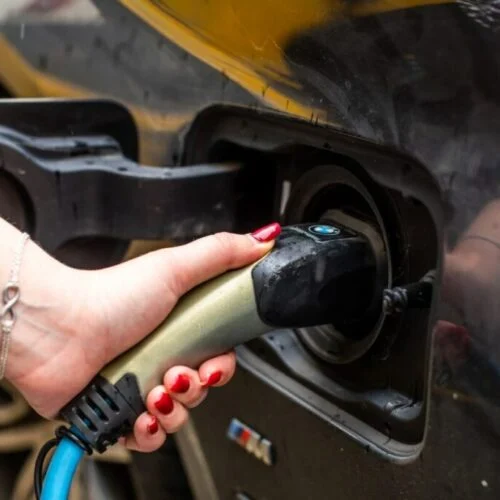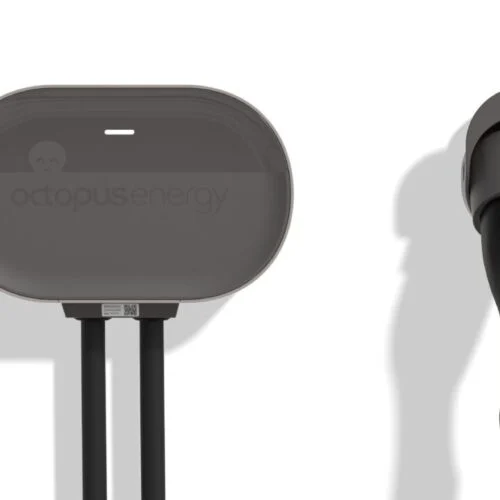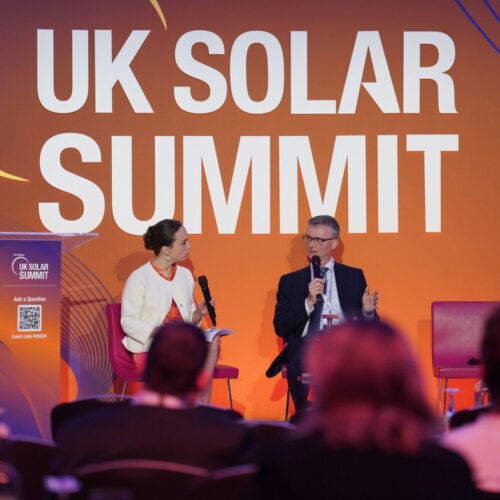Pod Point has been stepping up the roll out EV chargers across the UK recently, partnering several big-name companies. The latest deal saw the charging supplier selected to bring 800 chargepoints to Mitie’s sites as the company electrifies its fleet. At the end of last year, Pod Point teamed up with Tesco and Volkswagen to deliver 2,400 chargers across the supermarket’s stores.
In a month where we’ve seen the likes of energy giants National Grid, BP and Centrica amongst others join forces to issue an industry statement calling for the government to get behind a bid to establish an ultra-rapid charging network across the UK, these installs, although not ultra-rapid, feel right on time.
James McKemey, head of insight at Pod Point, spoke to Current± about the difficult reality of creating ultra-rapid charging, how to encourage EV adoption and the importance of simplicity.
Pod Point appears to have ramped up its charging EV installs, first with the Tesco installs and now with Mitie. Why is it we’re seeing an increase in these sorts of partnerships and where is Pod Point heading next?
I think there’s an increasing awareness of the direction of travel. There’s an increasing awareness of the need to decarbonise and certainly in the UK the substantial impact of vehicle transport in that field.
I think [at Pod Point] we had a major pivot, we had an evolution not a revolution, on what we want to do. In my role I do a lot of engagement with the government and there’s a lot that comes down that line in the form of smart charging and flexibility. When we start to move to the larger workplace installs, then smart charging and load management and those sorts of things are now pretty standard practice. That seems to get rolled out quite a lot now whereas before it felt like a new emerging technology.
In terms of pure technology, it’s [the] evolution of Pod Point rather than revolution. All our charging points communicate, they’re all smart already, so we try and roll out new features in terms of software on the back end of what they can do.
We’ve seen calls for a network of ultra-rapid chargers to be established in the UK. How important is a network like this?
We’re massively supportive of that as a concept… Our view of this infrastructure is quite commercial challenging because as your battery size increases- and that’s a trend that’s exciting- you tend not to see any full battery electric vehicles with a battery size of anything less than 50kWh. And it’s full battery electric that’s the future, that’s where we’re all headed… And they are going bigger and bigger and the ranges are getting in excess of 200 miles. We tend to think 200 miles of real world range is at the point where your typical driver starts to feel comfortable within that car and most of your day to day mileage is comfortably covered on a single charge.
One of the challenges you have is as your battery gets bigger, your need for rapid charging decreases, so you utilise a rapid charger less frequently because it’s rarer that you exceed the capacity of your battery. But when you do get there you need higher power and the higher power infrastructure in those locations costs more. They become quite capital intensive projects to go and install 150kW plus rapid chargers in a large hub.
How easy is it to develop a wide-spanning network of ultra-rapid charging, as has been suggested the UK needs to decarbonise transport?
Because of the capital intensive nature of the ultra-fast stuff, it’s not an appealing market for a firm like Pod Point initially to get into. Certainly we don’t have the pockets of an oil major to potentially have a go at financing those kinds of installations. It’s an area where we think it can be challenging for us.
The one area where we see that rapid charging has been really quite successful would probably be what Tesla have done with their own network. That’s a model which enables them to sell more cars and they build a bit of margin onto the cars to pay for the rollout of the network. And even though the utilisation is probably lower than most Tesla drivers thought it was going to be when they got into the car, they feel comfortable, they can go everywhere and Tesla have been able to sell more and more cars on the basis of providing that long range network.
Pod Point’s chargers are universal chargers, allowing any plug-in electric car to charge. How important is it for charging to be easily accessible and consistent?
In terms of the charging infrastructure itself, it’s absolutely pivotal. The establishment of the type 2 AC socket as essentially the standard throughout Europe has been very helpful and that’s been in place for some time now. It doesn’t look like it’s going anywhere. There’s a bit of a fight going on between type 2 and type 1 on the car side and type 2 seems to be taking the lead particularly with the Nissan last year going that way. But even so, it’s not a huge burden to have a type 1 and a type 2. It’s a bit like having an Apple phone and an android phone. They both charge from a USB so long as you’ve got the cable that goes with your phone. On the rapid charge side, it’s a little frustrating that we have probably three competing standards… it’d be nice if there was just one but again it’s not an utter disaster. You just have to make sure you accommodate each standard.
What needs to be done to enable mass uptake of EVs?
The biggest thing at the moment is the selection of vehicles you can buy. There’s simply no doubt that that is by far and away the biggest barrier. We would have a much, much higher uptake rate if we could fulfil demand for EVs, then that has a snowballing effect.
I think there’s some elements of perception with EVs which are wrong. Some people still think that they have a performance deficit versus the internal combustion engine (ICE) car. Of course they do, but it’s the other way round. The ICE cannot get anywhere near an electric car. It’s a far, far superior vehicle. So that really is only a perception thing.
Then you come down to the three core ones, which are about range, cost and infrastructure. And range I think is arguably solved. Infrastructure we are working hard to do. I do think expanding [a rapid charging network] is an area where we need to do a bit better and maybe a bit quicker to give people the feeling of total freedom that they can get everywhere. But otherwise it becomes fairly organic and it’s about getting chargers into people’s homes when they get an electric car, it’s about really getting chargers into workplaces.
For us, we think up to 90% of all charging is going to be covered by those two which is typically not what the general public would expect when they’re coming into EVs and they’re saying. ‘is there enough infrastructure?’, they tend not to think of homes and work as being a key part but they absolutely are.





